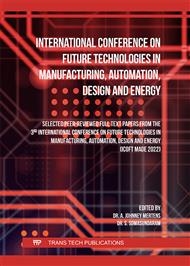p.111
p.121
p.129
p.137
p.145
p.155
p.165
p.173
p.183
Analytical Approach for Design of Double Ramp Hypersonic Intake for Scramjet Engine
Abstract:
Rockets are the non-air breathing engines used for space exploration carrying both fuel and oxidizer and increasing the cost missions. So, to reduce the cost of space exploration, research on air breathing engines known as Scramjet engines is focused. Scramjet engine achieves hypersonic speeds by the efficient design of intake. The intake provides high pressurized flow to the combustion chamber by compressing free stream flow using shock waves generated from ramp and cowl. Thus, the strength of shock waves generated in the intake due to ramps and cowl will define the efficiency of intake. The efficient design of hypersonic intake will depend on the ramp angles and quantity of ramps, Osawtitsch and Kantrowitz criteria. This paper deals the design of hypersonic intake based on performance parameters like Total Pressure Ratio, Kinetic Energy efficiency and Static Pressure ratio using a python code for various Mach numbers 5, 6, 7 and 8. The proposed method designs mixed compression double ramp intake using oblique shock theory. The novelty of the present work is to understand the geometrical changes attained as per change in operating conditions of the engine. The hypersonic intake designed for Mach 5 is validated with CFD results and compared with analytical results using python code.
Info:
Periodical:
Pages:
145-153
Citation:
Online since:
September 2023
Authors:
Price:
Сopyright:
© 2023 Trans Tech Publications Ltd. All Rights Reserved
Share:
Citation:


